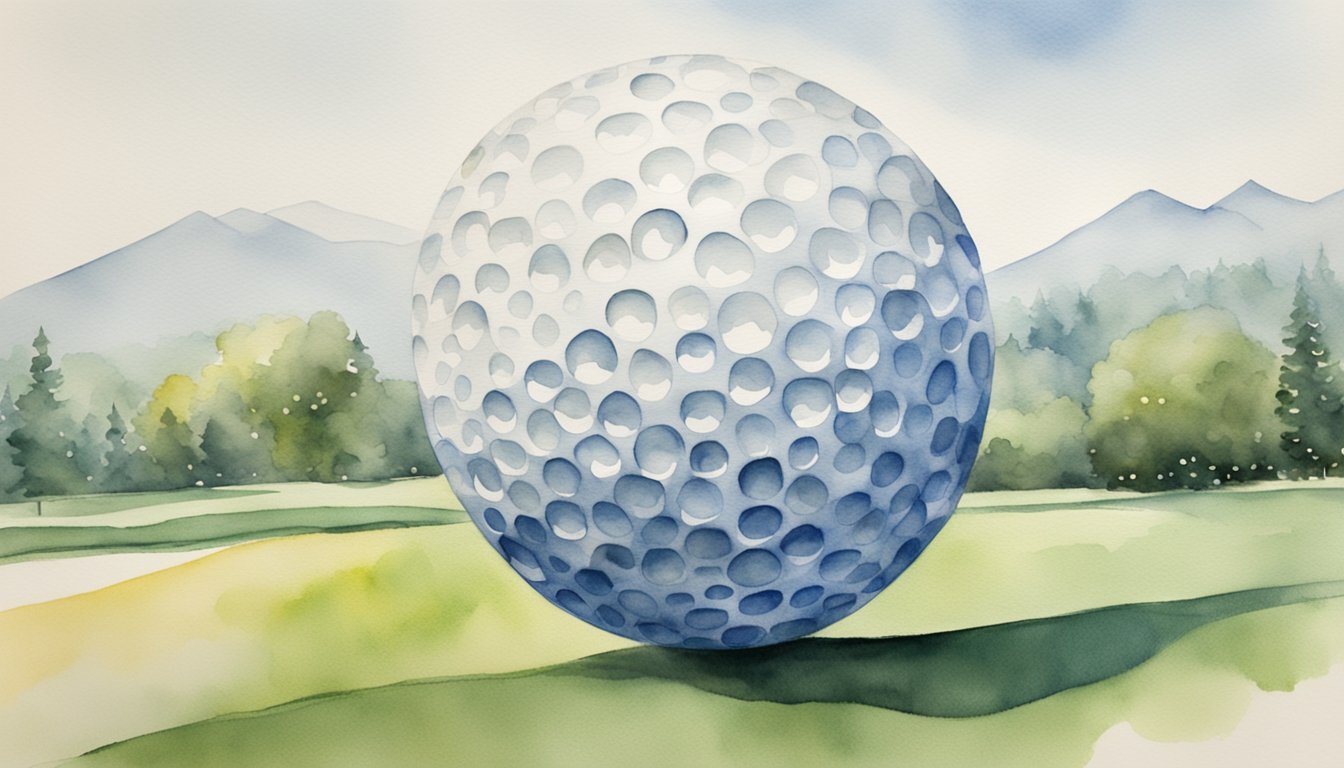Basics of Golf Ball Dimples
Golf ball dimples are critical for enhancing the ball’s aerodynamics, allowing it to travel further than a smooth ball would. Understanding the history and the role these dimples play in flight demonstrates the intersection of sports and physics.
History and Evolution
The design of golf balls has undergone a significant transformation from their initial smooth and spherical design. Observations and accidental discoveries led to the realization that older balls with nicks and cuts traveled farther than their newer counterparts. The science behind this phenomenon caught the interest of aerodynamicists, who recognized that these imperfections introduced turbulence in the air surrounding the ball, reducing drag. This discovery prompted manufacturers to intentionally incorporate dimples into the design, marking a milestone in the evolution of golf ball aerodynamics.
The Role of Dimples in Flight
Dimples on a golf ball serve as turbulators, small features that create turbulence in the layer of air next to the ball—known as the boundary layer—which results in a tighter airflow and reduced drag. When a golf ball is struck, dimples also help to generate lift by affecting the pressure differential on the ball’s surface during flight. This aerodynamic principle is akin to the forces that keep airplanes aloft, allowing the ball to maintain velocity for a longer duration and travel further. In essence, these strategically placed depressions harness the physics of aerodynamics to optimize flight performance.
Impact on Golf Ball Performance

The design of golf ball dimples is a critical factor that significantly influences a golf ball’s flight and behavior. These dimples affect everything from trajectory to spin, making them a focal point in golf ball engineering.
Influence on Trajectory and Distance
Golf ball dimples play a crucial role in determining the trajectory and distance the ball will travel. They work by creating a thin layer of air—the boundary layer—which clings to the ball’s surface and reviews pressure differences around it. With the help of the dimples, this difference in pressure creates an upward force, known as lift, which counteracts gravity. A ball with the optimal dimple design can see a reduction in drag force while maintaining velocity, allowing it to fly farther than a smooth golf ball which experiences more air resistance and less lift.
- Size and dimple depth impact aerodynamic optimization.
- A smooth golf ball would cover half the distance compared to dimpled balls.
More about the science behind this can be read in an article discussing How do dimples in golf balls affect their flight?
Control and Precision of Spin
The spin rate and ball spin can be precisely controlled thanks to the dimples on a golf ball. When a golfer hits the ball, the adhesion of the club’s surface and the ball’s dimples create backspin. This spin generates lift via the Magnus effect. The right amount of backspin is crucial for achieving control over the ball’s landing and ensuring it does not careen off target. Manufacturers carefully consider the dimple shape and pattern to manipulate the ball’s aerodynamics, increasing control over the spin and enabling golfers to execute shots with precision.
- Backspin is beneficial for control and lift.
- Engineers design dimples to optimize spin rate and control.
You can further explore the role of dimples in The Simple Science Behind Dimples on a Golf Ball.
Technological Advancements
As golf ball technology advances, engineers continue to refine dimple design to enhance aerodynamic optimization. Through extensive testing and research, manufacturers are increasingly able to fine-tune the launch angle, lift force, and spin rate. This involves adjusting the dimple depth, shape, and overall design to suit different playing conditions and player preferences. Continual improvements in this area offer significant advantages to golfers, aiming at a ball that maintains momentum and speed over longer distances with the right amount of spin for control.
- Technological advancements have led to various dimple designs.
- Optimizing golf ball performance remains a goal for manufacturers.
Learn more about how technological advancements influence golf ball design by reading about Why Golf Balls Have Dimples: The Science Behind The Design.

